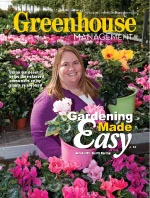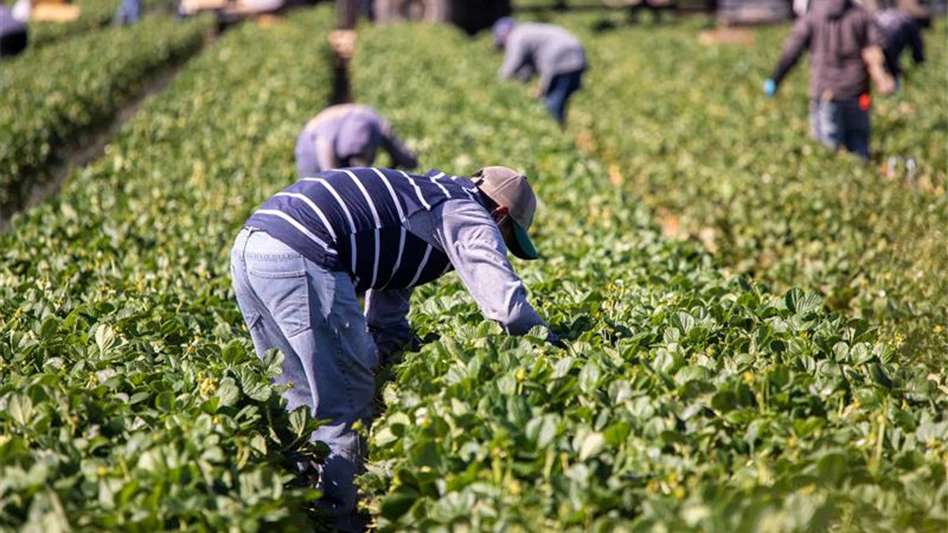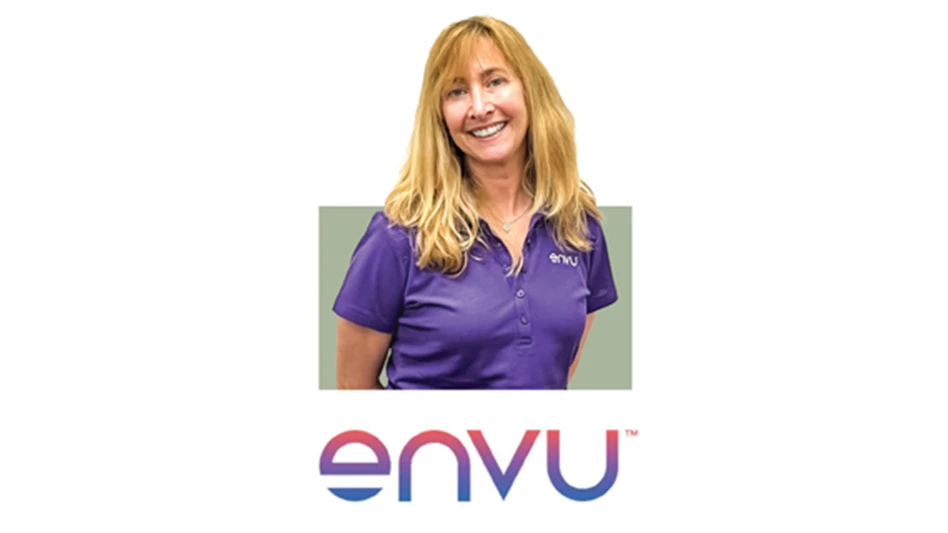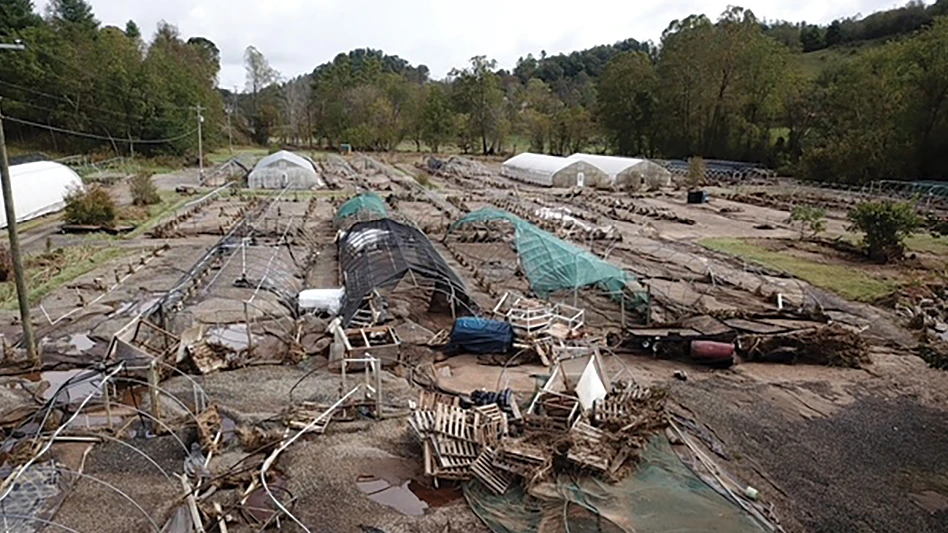|
An increasing number of greenhouse growers are showing interest in “sustainable” and “organic” growing practices and the possibility of becoming certified as sustainable or organic producers. Eliminating chemical pesticides, adopting integrated pest management practices and using biorational insect and disease control methods are important steps toward reaching the organic-certified goal. Growers looking to implement organic production methods will need to seek alternatives to growing mixes that contain chemical starter fertilizers and wetting agents and the application of traditional water-soluble chemical fertilizers.
Limited product choices
Currently only a few commercial soilless media are approved by the National Organic Program (NOP) or the Organic Materials Review Institute (OMRI). Some companies market several organic formulations of peat-lite media containing no chemical fertilizers or wetting agents. Some in the organic community object to the use of sphagnum peat moss in horticulture, but peat-containing mixes are often approved for use in organic plant production.
Compost is an obvious choice as an alternative to peat-containing media. Historically many types of compost have proven successful for growing greenhouse crops. However, widespread use of compost has been limited by the lack of long-term availability of large quantities of a consistent product.
The only widely available water-soluble fertilizer approved by NOP and OMRI is liquid fish fertilizer (fish emulsion). Liquid fish fertilizer has a very low nitrogen-phosphorus-potassium analysis (2-4-1), a rather thick consistency and some users object to its odor. Fish fertilizer does have the advantage of being compatible with most application equipment and systems growers already use for water-soluble fertilizers. Fish fertilizer has been successfully applied through a drip irrigation system to greenhouse tomatoes.
Another approach to organically fertilizing greenhouse plants is to incorporate bulk fertilizers like dried blood, bone meal and rock phosphate into the growing medium before planting. However, since the fertilizers are already incorporated, this method limits the control of nutrition as the plants grow unlike water-soluble fertilizers.
Michigan State University researchers have tested growing media amended with a commercial alfalfa meal-based 3-1-5 fertilizer as the source of nutrients. A variety of bedding plants were successfully produced without applying additional fertilizer.
Comparing organic media, fertilizers
Studies are being conducted at the University of Massachusetts to evaluate several commercial organic growing media, liquid fish emulsion fertilizer, the Michigan State formulation and alfalfa pellets. This project is intended to help small- and medium-sized growers produce annual plants using these types of products.
How the plants were grown
‘First Lady’ marigold seedlings were transplanted into 4-inch pots filled with either Fafard 3B, Fafard Organic FOF#30, and Sunshine Organic Planting Mix SOPM. The latter two mixes are soilless peat-based media that do not contain a chemical starter fertilizer or wetting agent. Fafard Organic FOF#30 is the organic version of 3B and contains Perdue Organic Fertilizer as a starter charge and no wetting agent. Sunshine SOPM is the organic version of Sunshine Mix #1 and contains yucca extract as a wetting agent. The mixes were tested prior to planting for pH, electrical conductivity (soluble salts), nitrate nitrogen (NO3-N), ammonium (NO3-N), phosphorus (P), potassium (K) and calcium (Ca) (Table 1).
Plants were fertilized with either Plantex 20-2-20 chemical fertilizer (200 parts per million nitrogen), Neptune’s Harvest Organic Fish (emulsion) Fertilizer 3-1-5 (2.2 fluid ounces per gallon), Planet Natural alfalfa pellets 5-1-2 (35 ounces per cubic foot), or the fish fertilizer plus alfalfa pellet treatments together. The alfalfa pellets were incorporated in the growing mixes before planting. Liquid fertilizers were applied at almost every watering.
At plant harvest foliar height, flower height, first flower bud diameter and shoot dry weight were measured.

Treatment differences
At harvest plants fertilized with chemical fertilizer, fish fertilizer or fish fertilizer plus alfalfa pellets were difficult to tell apart from each other regardless of the growing mix. The plants fertilized with alfalfa pellets alone were chlorotic and had noticeably smaller leaves than the plants in the other treatments.
Table 2 shows the main effects of fertilizer and growth medium on marigold growth. There were only a few interactions between the two factors.
Plants that received the chemical fertilizer were tallest, had the most developed first flower bud and accumulated the most shoot dry weight. Plants fertilized with fish fertilizer or the combination of fish fertilizer plus alfalfa pellets were, from a statistical standpoint, inferior to the plants receiving the chemical fertilizer. However, the actual differences were very small and of limited practical importance.
The plants fertilized with alfalfa pellets alone were nutrient deficient, but they were as tall as the chemical fertilizer treatment and taller than the fish fertilizer and fish plus alfalfa pellets treatments. However, first flower buds of plants fertilized with alfalfa pellets alone were much smaller and the plants accumulated much less shoot dry weight than the other treatments.
Plants grown in Fafard 3B were the tallest and accumulated the greatest dry weight. The two organic soilless mixes produced comparable levels of growth to each other except that Sunshine Organic plants accumulated significantly less dry weight.

Promising results
The results of this study indicate that organic materials show promise for use in commercial production. The main objectives of this first study were to determine the overall responses to the treatments and to use the results to establish levels of fish and alfalfa fertilizers for use in future experiments with marigold and other plants. It’s likely that applying higher levels of fish fertilizer or alfalfa pellets will produce better results. Also, using two organic fertilizers together (i.e., fish + alfalfa pellets) may prove to be a successful practice.
Marigold responses to growing medium, especially shoot dry weight, may have been due to the differences in nutrient levels at planting. Fafard 3B had a much higher nitrate nitrogen level at planting than the organic media and finished with the most shoot dry weight. Sunshine Organic, which produced plants with the lowest dry weight, had very low phosphorus and potassium levels and a much lower electrical conductivity at planting compared to the other two growing mixes. Although starter fertilizers are supposed to last only two to three weeks, it’s surprising how much impact on future growth these fertilizers can have if their levels are low during the time after transplanting when young plants are not watered with fertilizer very frequently.
Douglas Cox is associate professor, University of Massachusetts, Department of Plant, Soil & Insect Sciences, (413) 545-5214; dcox@pssci.umass.edu.
This project is supported by the Northeast Greenhouse Conference and the New England Florist Credit Association Endowment.
Article first appeared in the July-August 2009,Floral Notes Newsletter, Vol. 22, No. 1.
|








